
Building products company Boise Cascade Company (NYSE: BCC) fell short of the market’s revenue expectations in Q2 CY2025, with sales falling 3.2% year on year to $1.74 billion. Its GAAP profit of $1.64 per share was 3.1% below analysts’ consensus estimates.
Is now the time to buy Boise Cascade? Find out by accessing our full research report, it’s free.
Boise Cascade (BCC) Q2 CY2025 Highlights:
- Revenue: $1.74 billion vs analyst estimates of $1.75 billion (3.2% year-on-year decline, 0.7% miss)
- EPS (GAAP): $1.64 vs analyst expectations of $1.69 (3.1% miss)
- Adjusted EBITDA: $119 million vs analyst estimates of $126.9 million (6.8% margin, 6.2% miss)
- Operating Margin: 4.6%, down from 8.2% in the same quarter last year
- Free Cash Flow was -$45.88 million, down from $101.9 million in the same quarter last year
- Market Capitalization: $3.14 billion
“During the second quarter of 2025, we experienced sequential volume growth driven by seasonally stronger activity, although underlying demand for new residential construction remained muted,” said Nate Jorgensen, CEO.
Company Overview
Formed through the merger of two lumber companies, Boise Cascade Company (NYSE: BCC) manufactures and distributes wood products and other building materials.
Revenue Growth
A company’s long-term sales performance can indicate its overall quality. Any business can put up a good quarter or two, but many enduring ones grow for years. Regrettably, Boise Cascade’s sales grew at a mediocre 6.5% compounded annual growth rate over the last five years. This was below our standard for the industrials sector and is a rough starting point for our analysis.
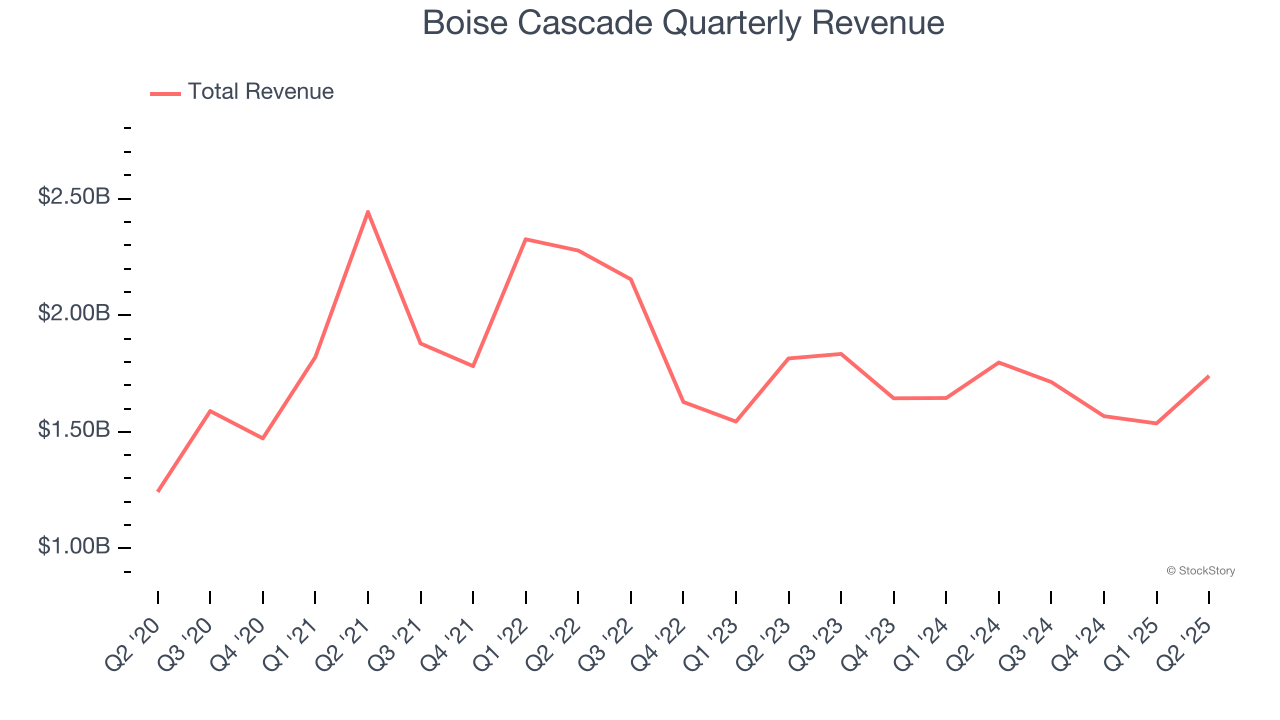
Long-term growth is the most important, but within industrials, a half-decade historical view may miss new industry trends or demand cycles. Boise Cascade’s performance shows it grew in the past but relinquished its gains over the last two years, as its revenue fell by 4.2% annually. 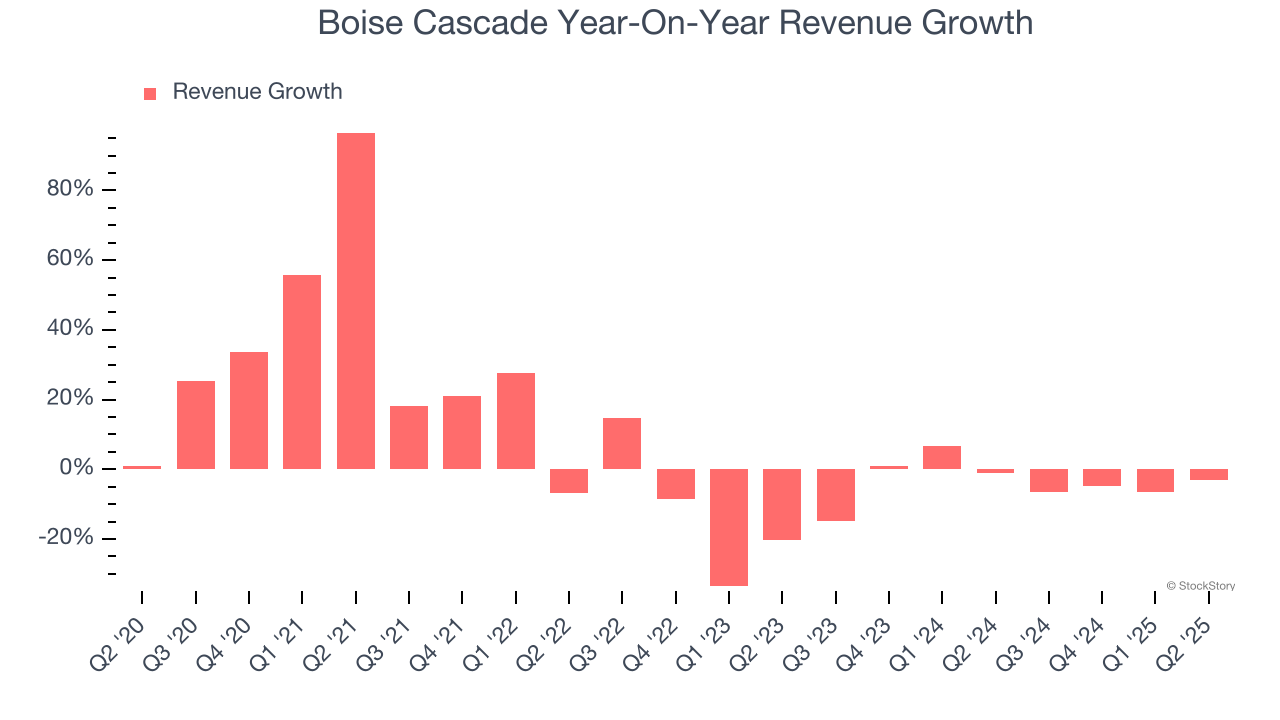
We can better understand the company’s revenue dynamics by analyzing its most important segments, Building Material Distribution and Wood products, which are 92.8% and 25.7% of revenue. Over the last two years, Boise Cascade’s Building Material Distribution revenue (plywood, siding, insulation) averaged 2.5% year-on-year declines while its Wood products revenue (lumber and beams) averaged 5.9% declines. 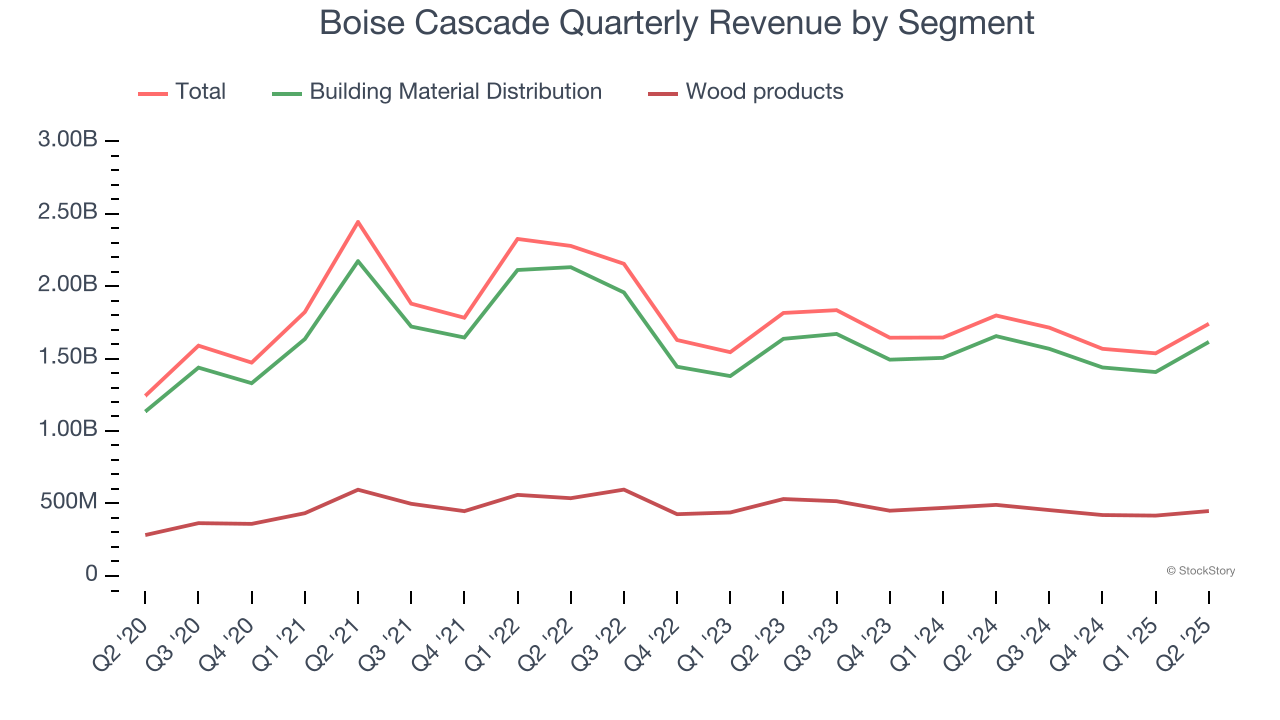
This quarter, Boise Cascade missed Wall Street’s estimates and reported a rather uninspiring 3.2% year-on-year revenue decline, generating $1.74 billion of revenue.
Looking ahead, sell-side analysts expect revenue to grow 2.5% over the next 12 months. While this projection suggests its newer products and services will fuel better top-line performance, it is still below the sector average.
Software is eating the world and there is virtually no industry left that has been untouched by it. That drives increasing demand for tools helping software developers do their jobs, whether it be monitoring critical cloud infrastructure, integrating audio and video functionality, or ensuring smooth content streaming. Click here to access a free report on our 3 favorite stocks to play this generational megatrend.
Operating Margin
Boise Cascade has managed its cost base well over the last five years. It demonstrated solid profitability for an industrials business, producing an average operating margin of 10%. This result was particularly impressive because of its low gross margin, which is mostly a factor of what it sells and takes huge shifts to move meaningfully. Companies have more control over their operating margins, and it’s a show of well-managed operations if they’re high when gross margins are low.
Looking at the trend in its profitability, Boise Cascade’s operating margin decreased by 6.7 percentage points over the last five years. This raises questions about the company’s expense base because its revenue growth should have given it leverage on its fixed costs, resulting in better economies of scale and profitability.
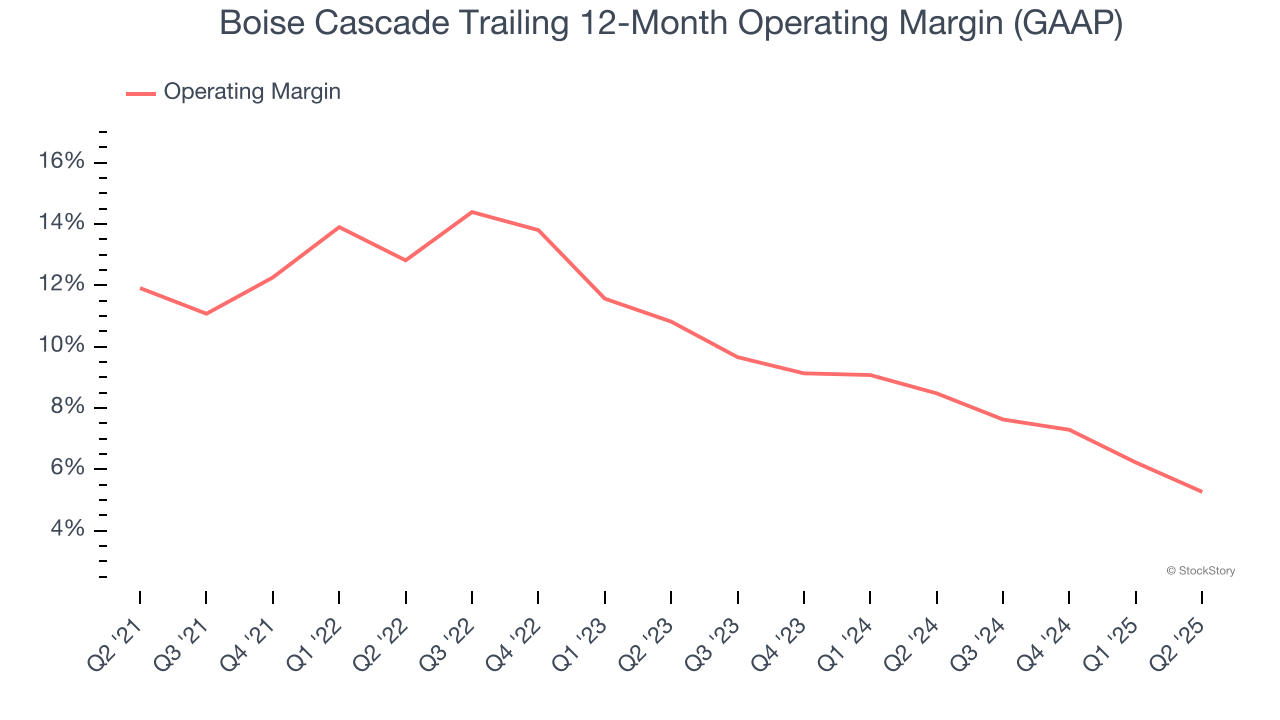
In Q2, Boise Cascade generated an operating margin profit margin of 4.6%, down 3.5 percentage points year on year. Since Boise Cascade’s operating margin decreased more than its gross margin, we can assume it was less efficient because expenses such as marketing, R&D, and administrative overhead increased.
Earnings Per Share
Revenue trends explain a company’s historical growth, but the long-term change in earnings per share (EPS) points to the profitability of that growth – for example, a company could inflate its sales through excessive spending on advertising and promotions.
Boise Cascade’s EPS grew at an astounding 25.1% compounded annual growth rate over the last five years, higher than its 6.5% annualized revenue growth. However, this alone doesn’t tell us much about its business quality because its operating margin didn’t improve.
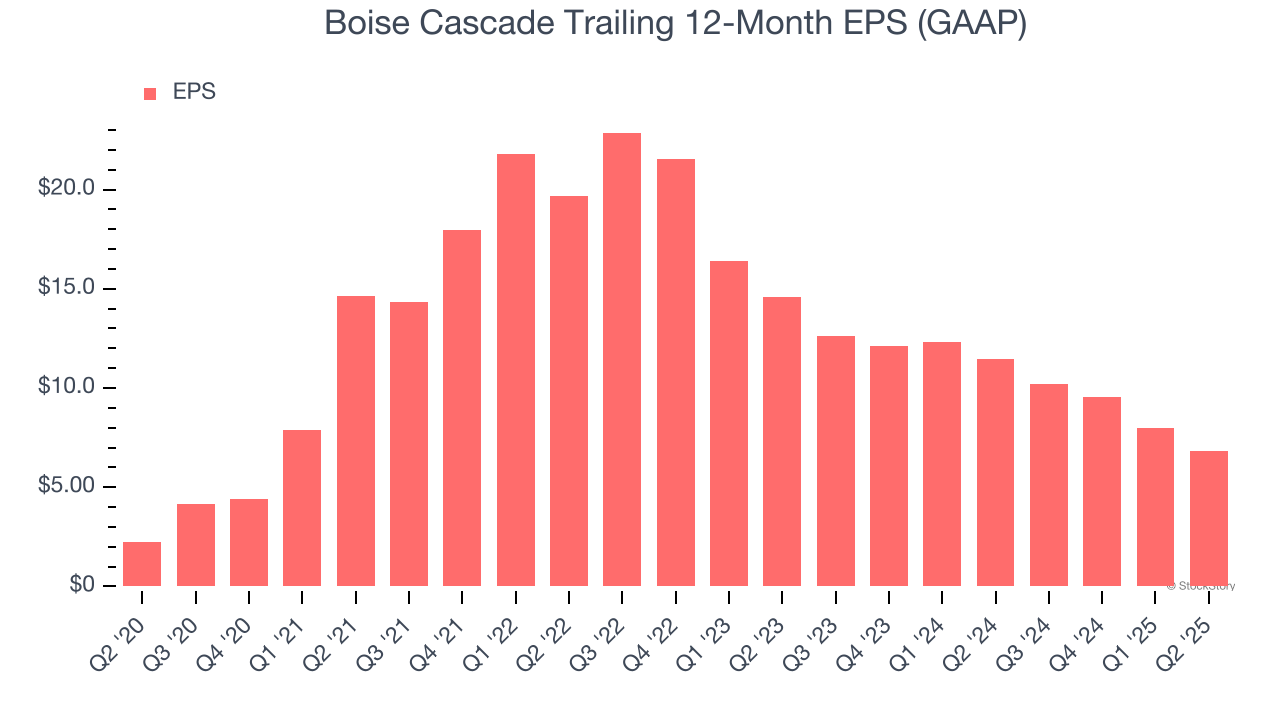
Diving into Boise Cascade’s quality of earnings can give us a better understanding of its performance. A five-year view shows that Boise Cascade has repurchased its stock, shrinking its share count by 4%. This tells us its EPS outperformed its revenue not because of increased operational efficiency but financial engineering, as buybacks boost per share earnings. 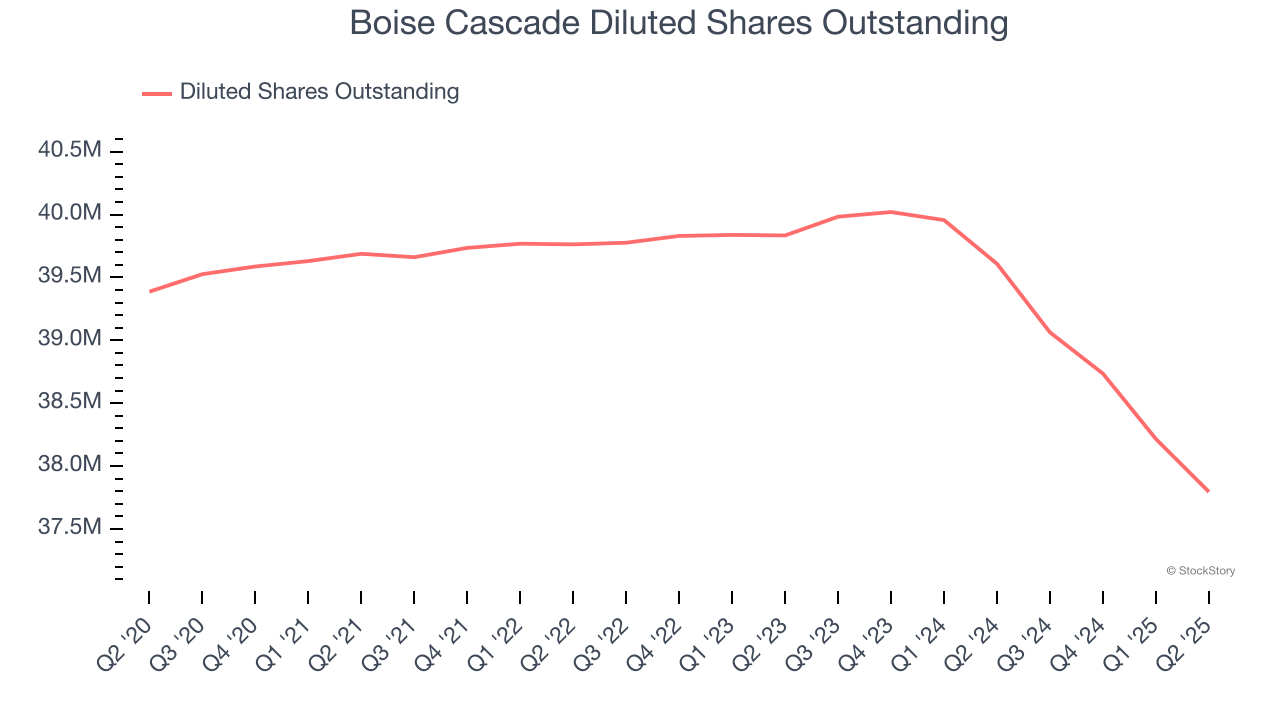
Like with revenue, we analyze EPS over a shorter period to see if we are missing a change in the business.
For Boise Cascade, its two-year annual EPS declines of 31.7% mark a reversal from its (seemingly) healthy five-year trend. We hope Boise Cascade can return to earnings growth in the future.
In Q2, Boise Cascade reported EPS at $1.64, down from $2.84 in the same quarter last year. This print missed analysts’ estimates, but we care more about long-term EPS growth than short-term movements. Over the next 12 months, Wall Street expects Boise Cascade’s full-year EPS of $6.81 to shrink by 2.3%.
Key Takeaways from Boise Cascade’s Q2 Results
It was good to see Boise Cascade beat analysts’ Wood products revenue expectations this quarter. On the other hand, its EBITDA missed and its EPS fell short of Wall Street’s estimates. Overall, this was a softer quarter. The stock traded down 1.4% to $81.41 immediately after reporting.
The latest quarter from Boise Cascade’s wasn’t that good. One earnings report doesn’t define a company’s quality, though, so let’s explore whether the stock is a buy at the current price. If you’re making that decision, you should consider the bigger picture of valuation, business qualities, as well as the latest earnings. We cover that in our actionable full research report which you can read here, it’s free.




